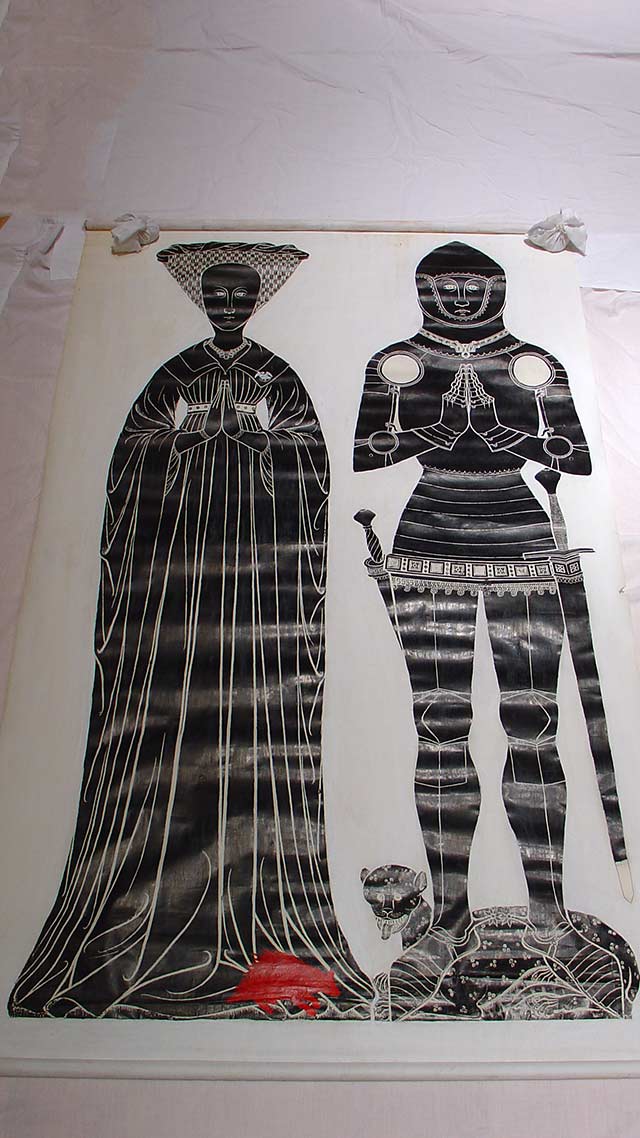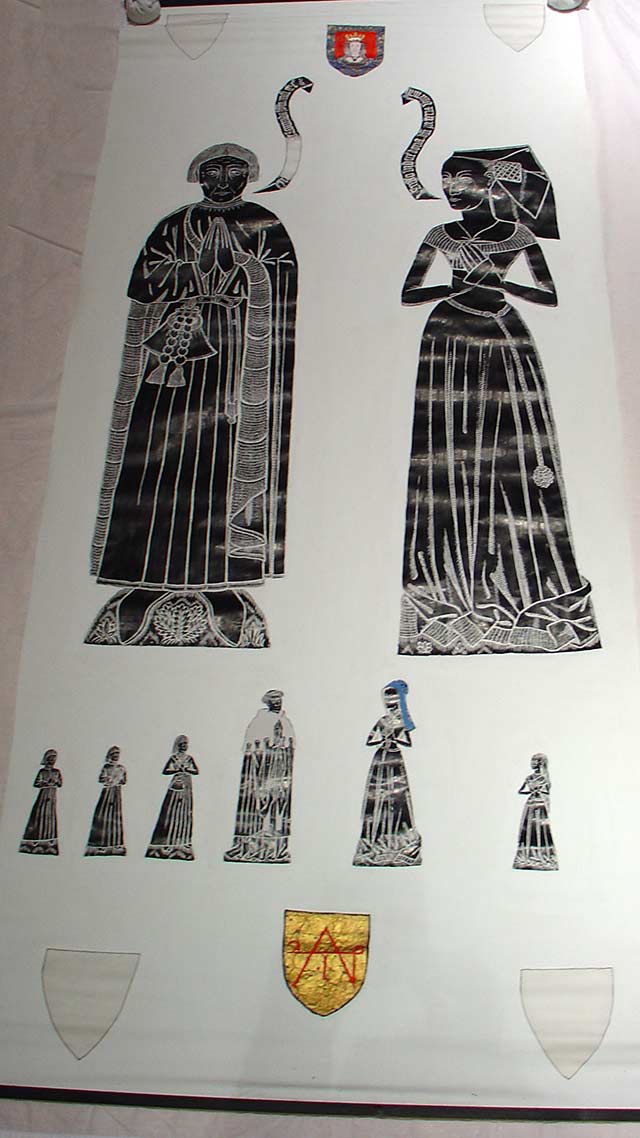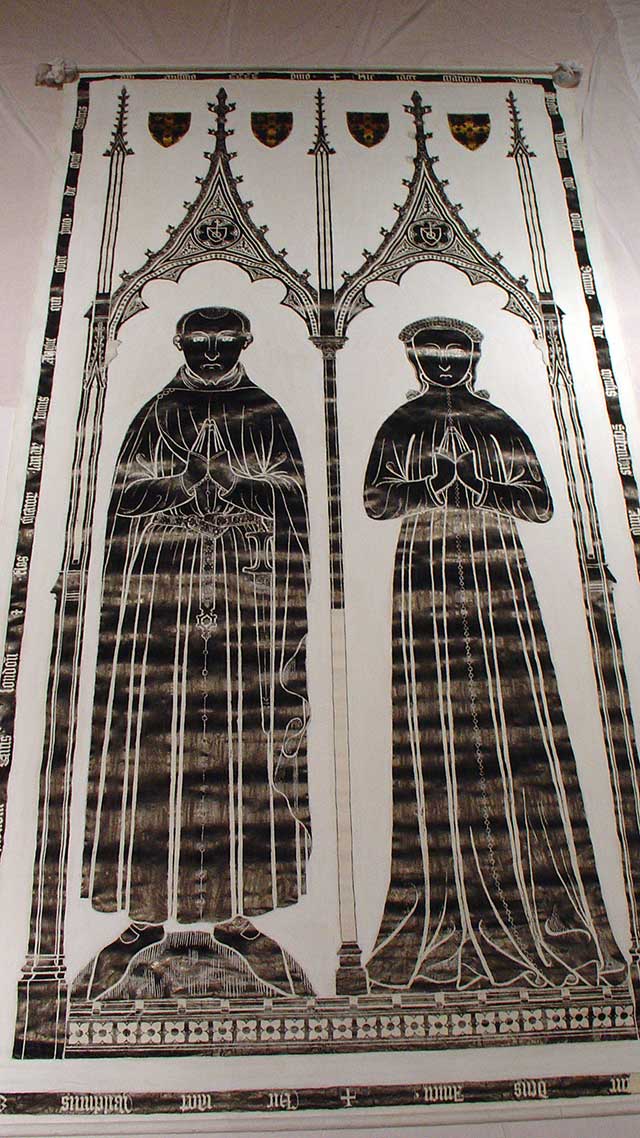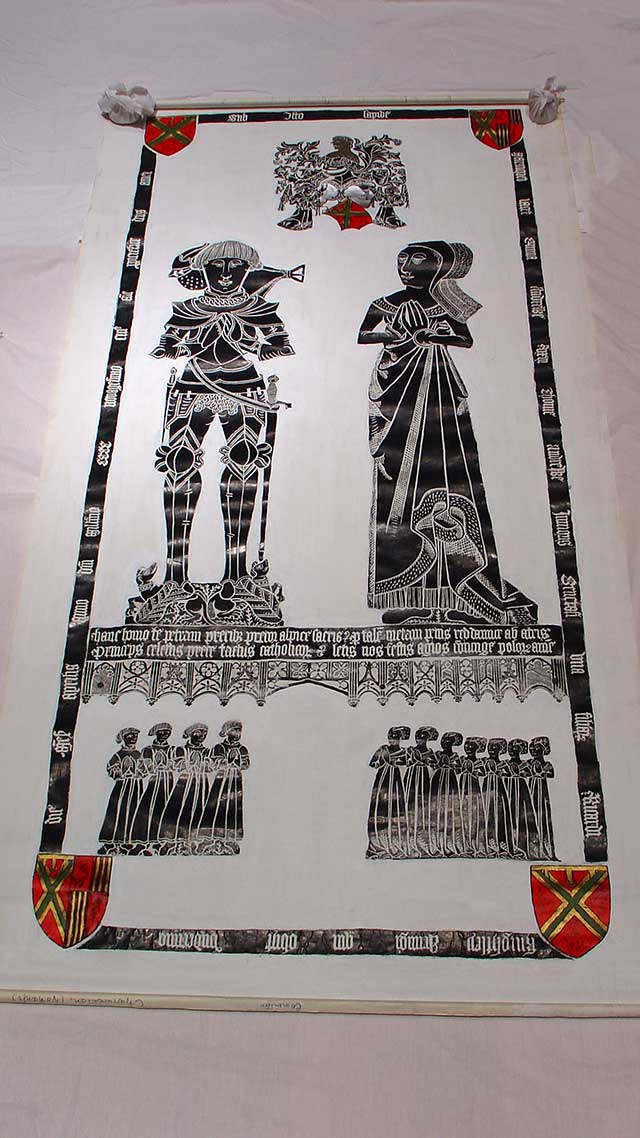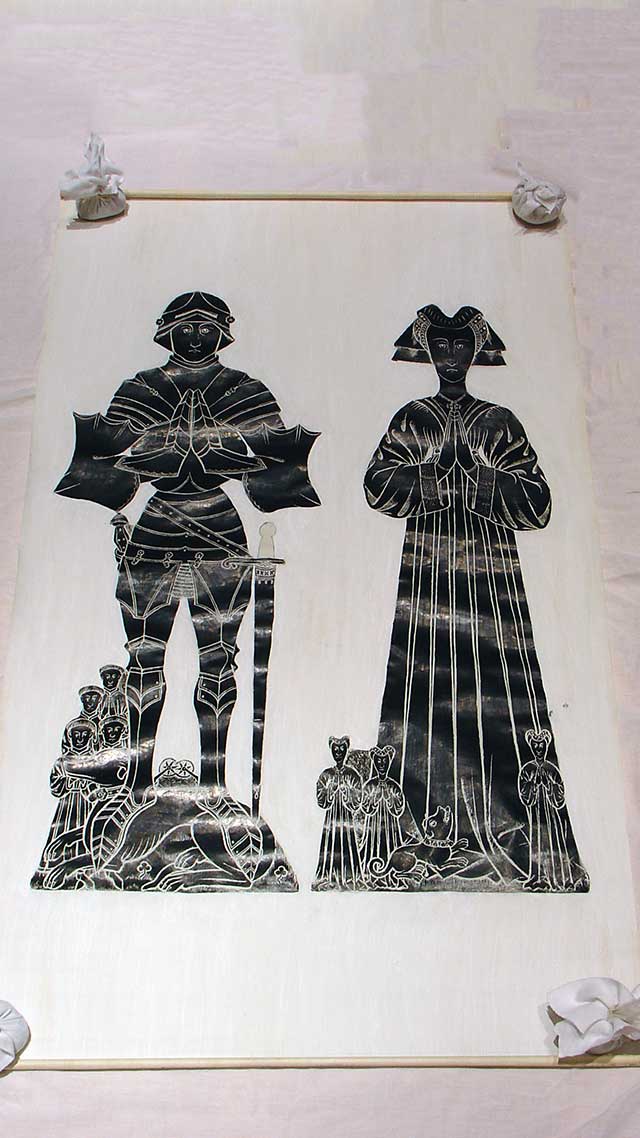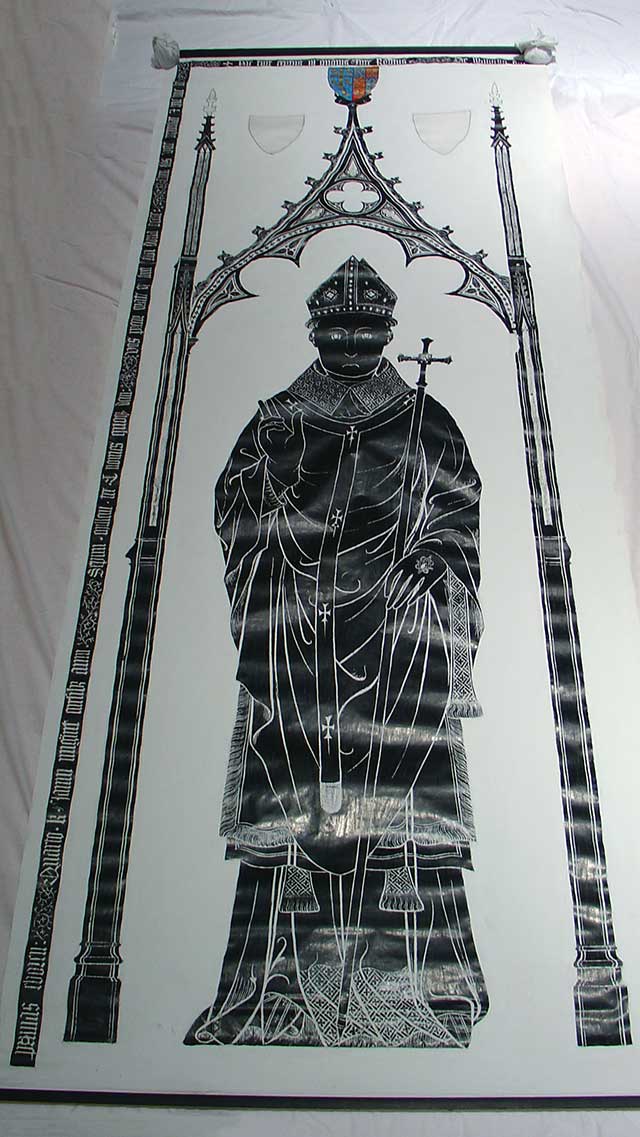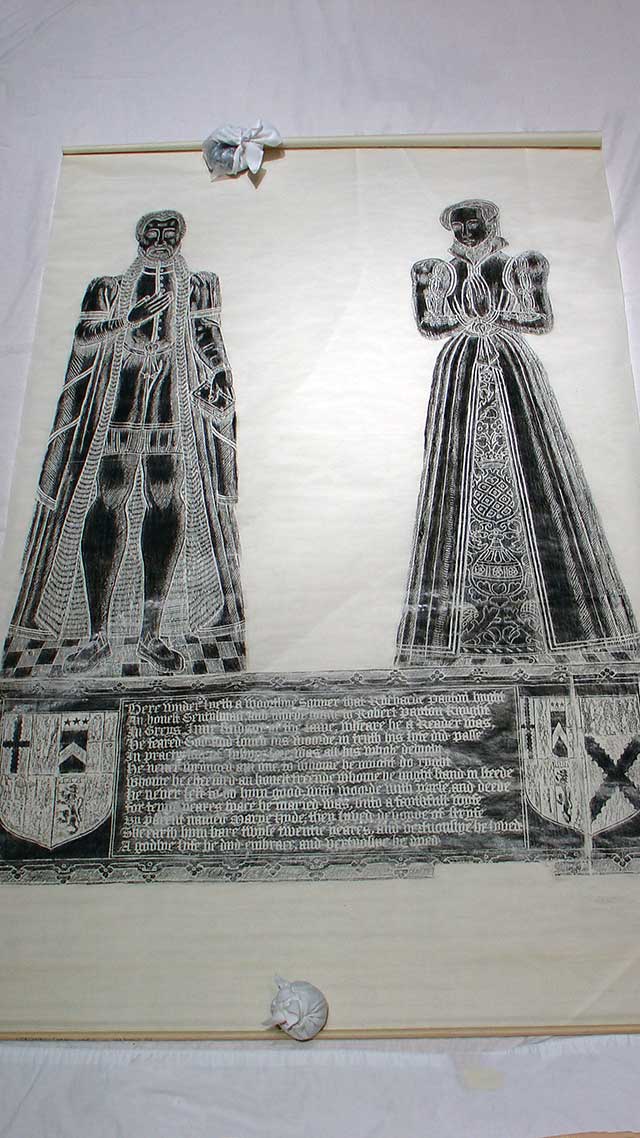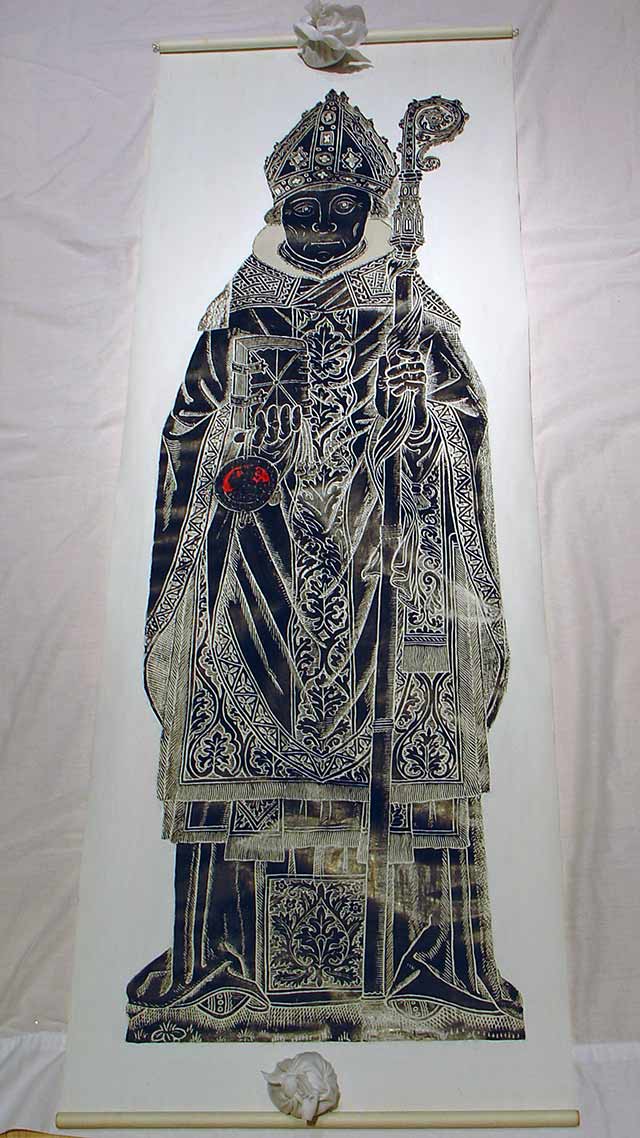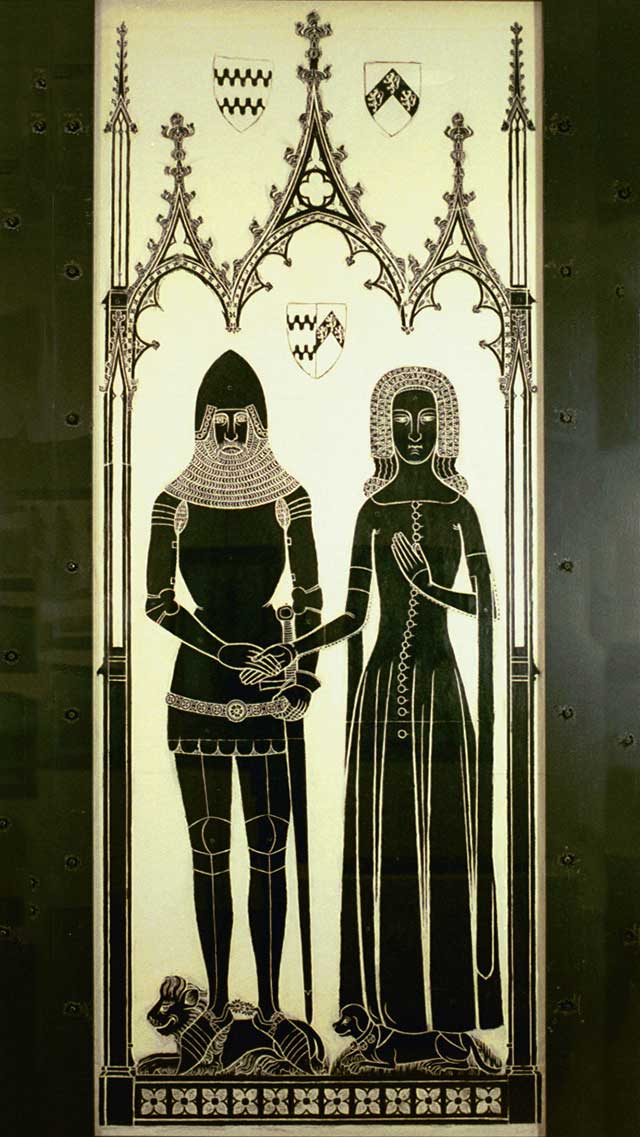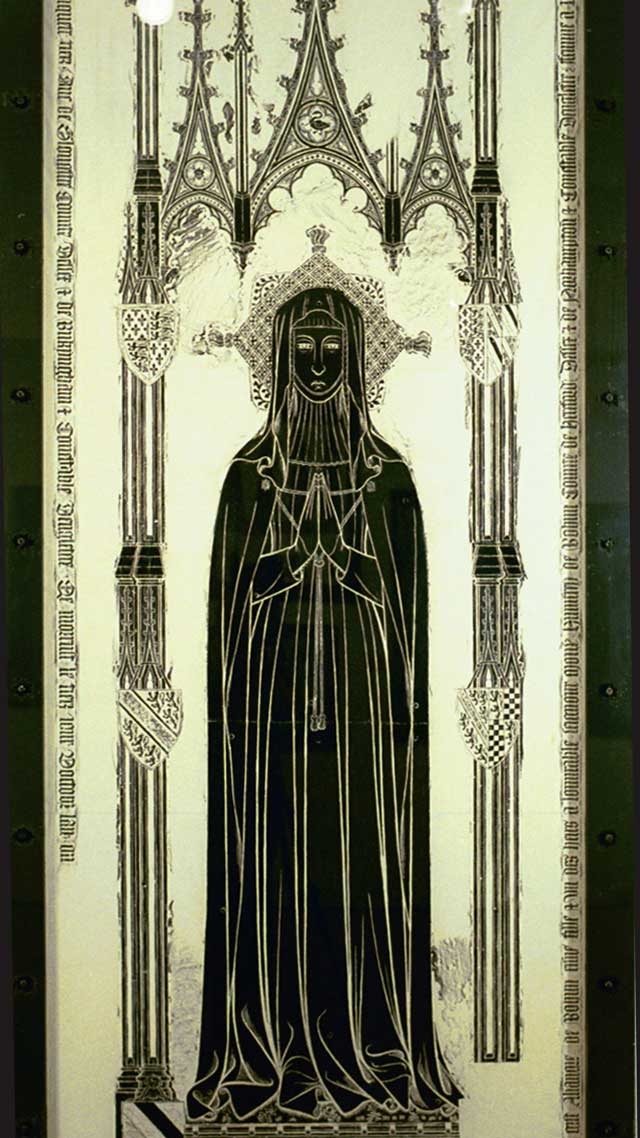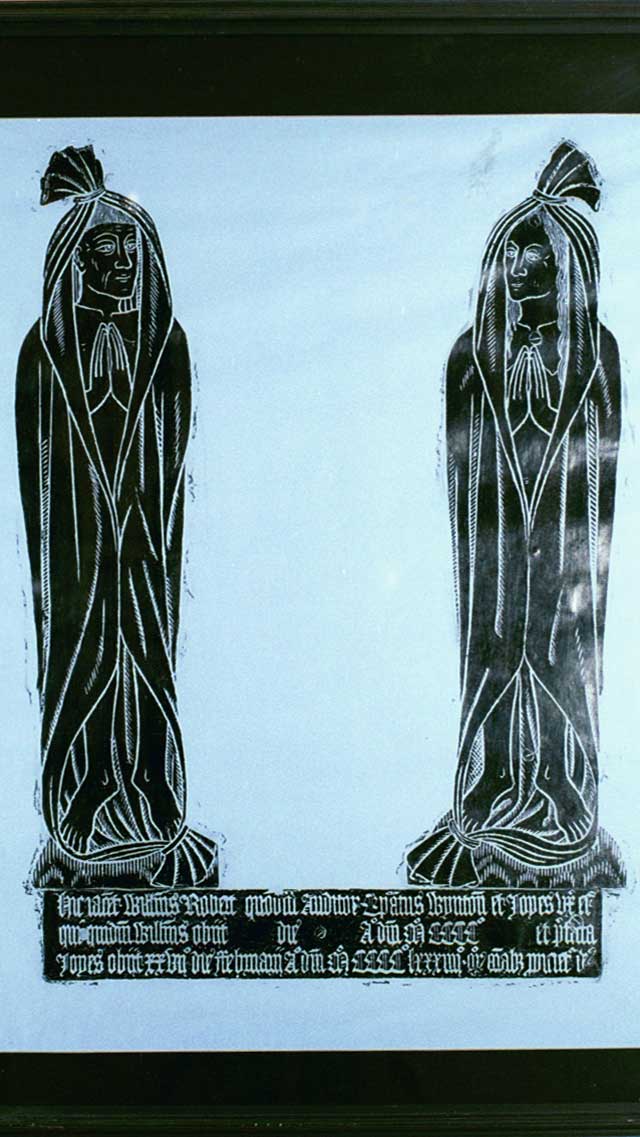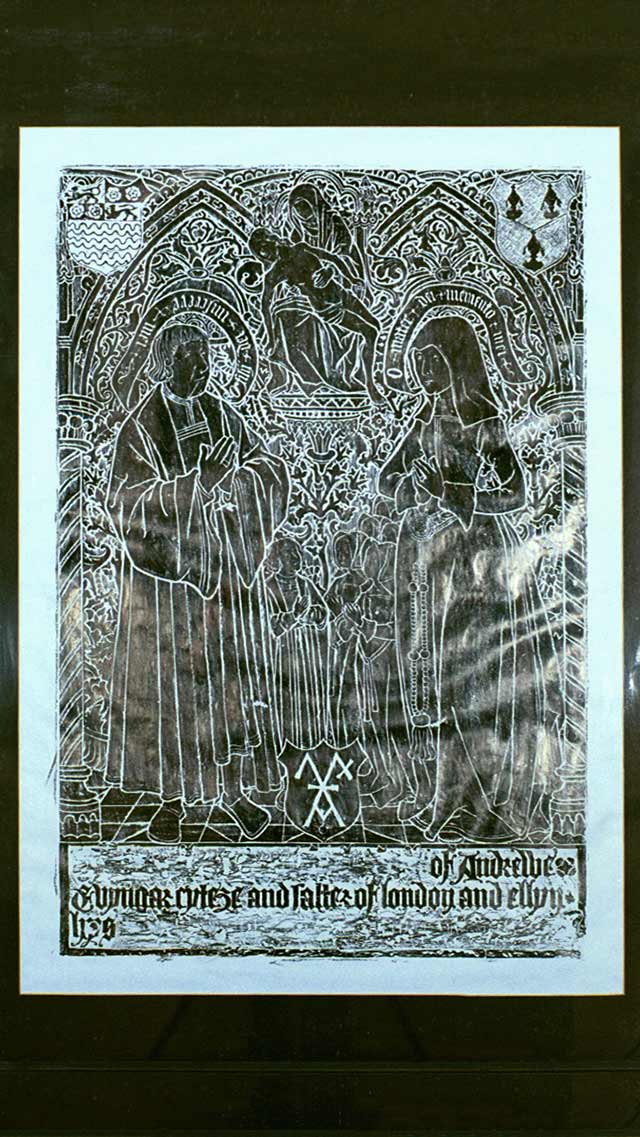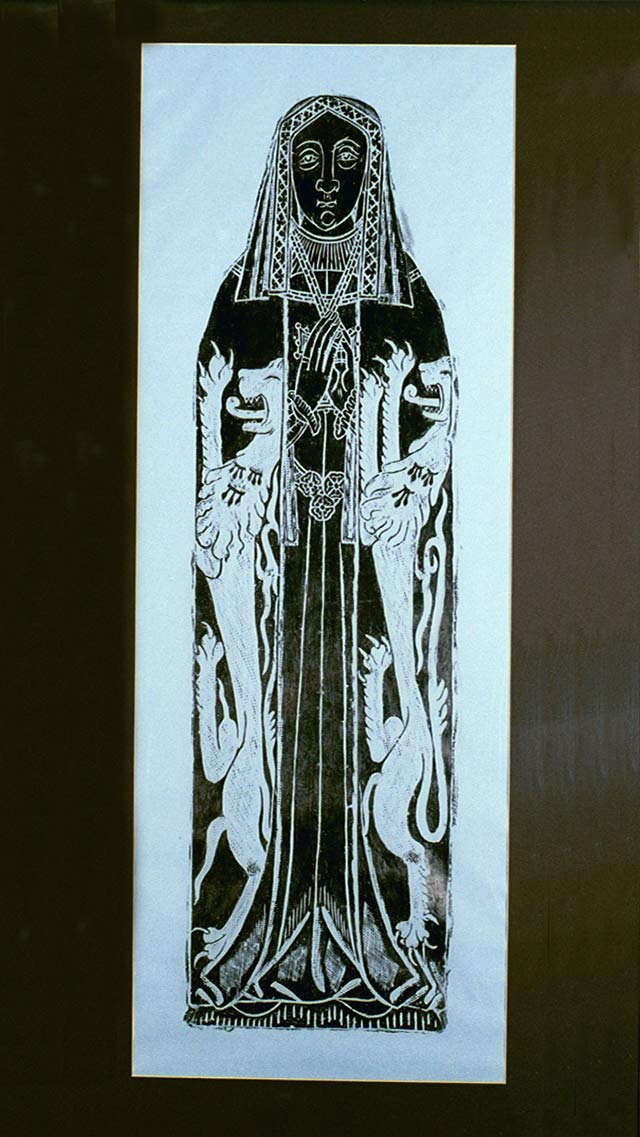
Brass Rubbing Collection
In the medieval and early modern eras (ca. 1200–1600), a new type of funeral art appeared in western Europe. Tombs inside churches, often of wealthy or powerful people, were topped with large decorative stone or brass plaques, replacing an earlier tradition of thee-dimensional sculpture. The brasses served as memorials to the men and women who lay beneath, sometimes containing heraldic symbols or other visual references to their status in society. Images on these brasses include knights, ladies, clergymen, and even coats of arms.
Spurlock Museum maintains a collection of over 200 brass rubbings that were made from brasses in churches across Great Britain, primarily in England. These rubbings were made and donated by two individuals, Kathleen H. Cairns and Mark R. Horowitz.
This collection is an important selective sampling of this technique, especially as the Museum does not intend to collect more objects of this type.
Making Brass Rubbings
Brass rubbings are a method of reproducing, on paper, monumental brasses found across Western Europe. These reproductions are made by taping a large piece of paper across the brass, then rubbing carefully and smoothly with a piece of heelball, a hard wax mixed with lampblack, across the entire brass. This action transfers the texture of the image onto the paper.
Rubbings are often clearer to read than the brass itself and can serve as an interesting observation into the past. The clothing and vestments on rubbings demonstrate traditional dress of the clergy, academics, civilians (particularly women), and the military from the thirteenth to early eighteenth centuries. One unique feature of a brass rubbing collection is that it can be used to examine changes over time to methods of production for arms and armor.
Creating rubbings from monumental brasses was a popular pastime in the Victorian era that experienced a revival in the mid–twentieth century. According to several publications from the 1960s and 1970s, an important part of the process was to obtain permission from the clergy in charge of a given church. Instructional pamphlets and books stress the importance of being aware of the church’s availability—don't go on a day that is set aside for cleaning or services—and to respect any requests for fees or donations.
